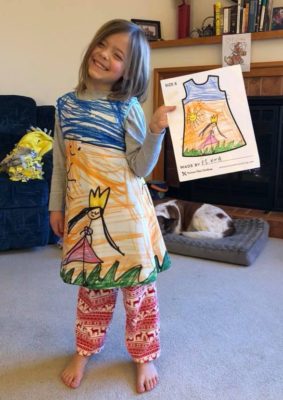Creative play, including making art, is important for children of all ages. Art time can help build motor skills, boost inventiveness and cultural awareness, help kids learn to make decisions, assist with language development in very young children, and even improve performance in academics. With these benefits, it’s not surprising so many preschools, schools, and other organizations engage children in art. As a parent, though, it can be overwhelming to figure out what to do with all these pieces.
Whether you’re staring down a school folder full of this week’s creations or a table in your home with items from the latest painting session, here are six tips for keeping the overflow of children’s art—and parental guilt—from taking over.
1. Choose One from Each Style and Period
You don’t have to keep paper every time your child puts something colorful on it; tossing a few finger paintings or waiting room doodles doesn’t make you a bad person. If you want to save artwork for posterity or so you can reflect later on your child’s growth, choose one of each type of style per period to keep. Decide how often you want to collect the art (once a week, month, or year) and select one piece of each type during that time: one finger painting, one construction paper collage, one pen sketch, and so forth.
2. Create Digital Archives and Ditch the Paper
If you can’t decide which art to keep or can’t bear to part with any of it, create a digital archive so you can toss most of the original paper creations. Scan images using an all-in-one printer or download a scanning app on your smartphone to get the job done. Or simply take photos of the pieces with your phone, maybe some with your child holding the art. Once a week, gather your child’s artwork and convert it to digital files. Save it in folders by date, age, or season, and use a backup site like Dropbox to ensure access to the images in the future.
3. Invest in Art Portfolios for Special Scrapbooking
Store original artwork in art portfolios, which are like large photo albums. Paper art slips easily within a protective sleeve in the portfolio, and you can use labels or permanent markers directly on the sleeve to record details about the piece, including any name and description your child gave it, where it was created, your child’s age at the time, and what materials were used. You might even gift the scrapbook to your child when they are older.
 Courtesy of picturethisclothing.com
Courtesy of picturethisclothing.com
(facebook.com/picturethisclothing)
4. Convert Art into Useful Items or Keepsakes
Put children’s art to use in your home. A cute frame and creative matting turns paint splatters or crayon scribbles into abstract wall art, and you can laminate larger pieces to use as place mats during meals or Play Dough time. Some companies now turn children’s artwork into toys, and you can also have drawings converted to clothing as pictured above!
5. Gift Kid’s Creations to Loved Ones
During holidays or birthdays, let kids pick one of their favorite pieces to give to a relative or friend. Parents, grandparents, aunts, uncles, and others may appreciate a memento of a child’s younger years, and you can make it even more special by framing it or using a shadow box for display with other items.
6. Design a Swappable Museum Wall
Let kids curate their own gallery with a frame-themed museum wall. Simply paint frames of various size on a flat wall in a hall or other easy-to-access area. Let kids tape or clip art in place inside the faux-frames; kids can swap art out as they like, tossing older creations that have seen their 15 minutes of fame.
You don’t have to keep every item created by your kids, but when you do save these memories, think outside the box to beat clutter.

 Courtesy of picturethisclothing.com
Courtesy of picturethisclothing.com




















































































































